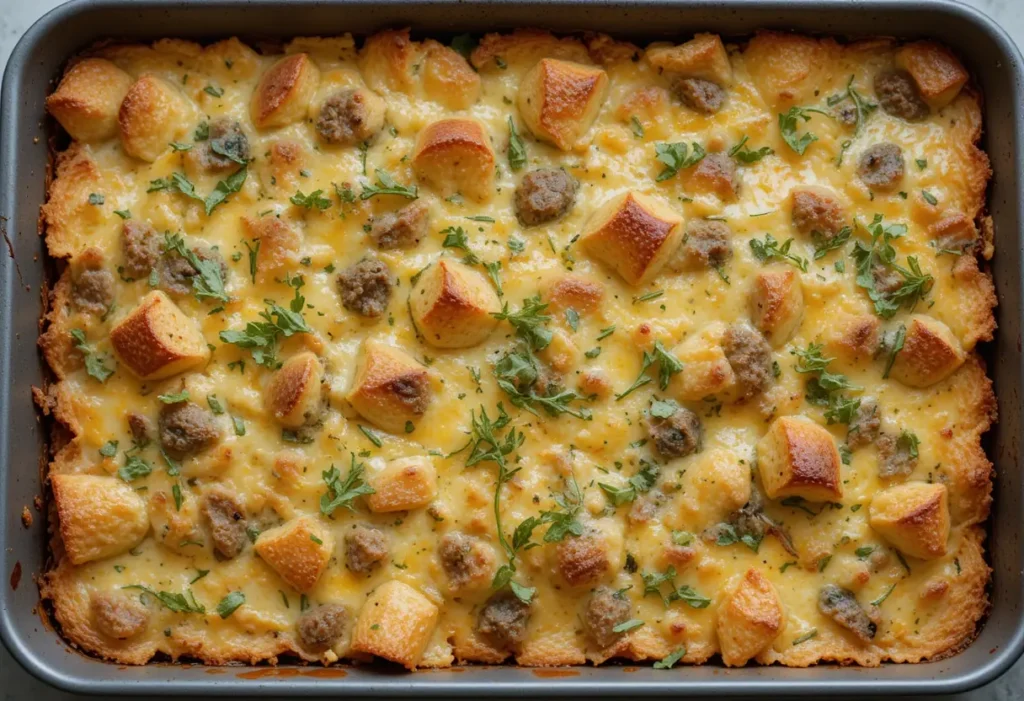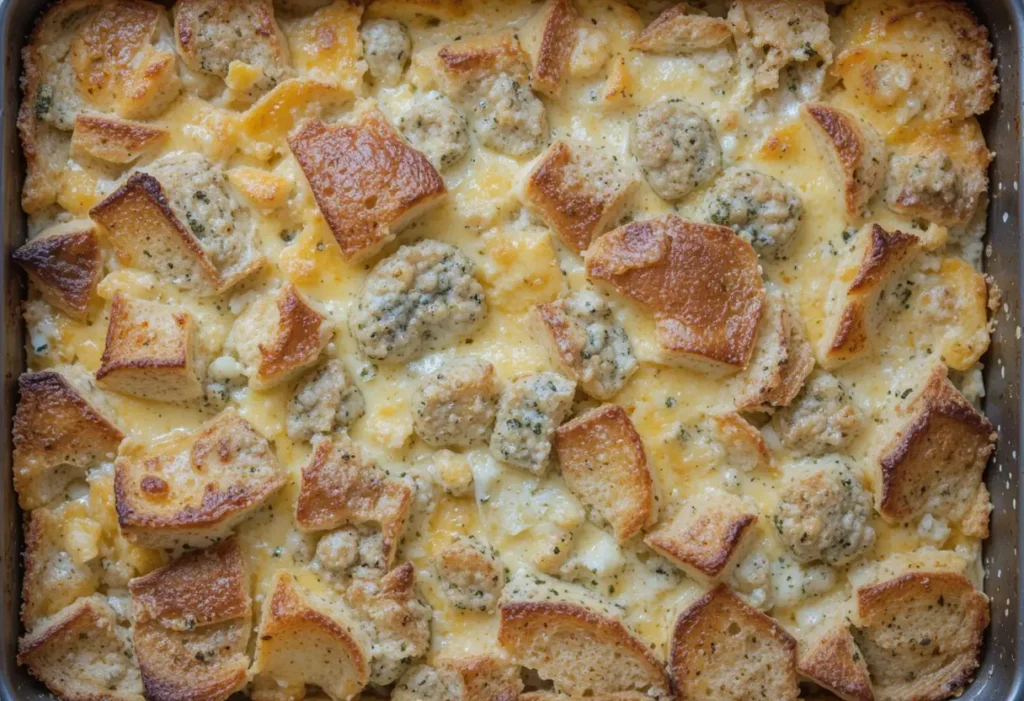If you’re a fan of hearty breakfast casseroles or love hosting brunches, you’ve probably heard of strata. But what exactly is this dish, and why has it become such a brunch staple? In this article, we’ll dive deep into the world of strata, from its ingredients and variations to expert tips for making it perfectly every time.
Introduction to Strata
A s.trata is a savory, layered dish made from bread, eggs, and cheese, often combined with meats or vegetables. It’s similar to a savory bread pudding, offering a custardy texture and rich flavor that’s perfect for breakfast, brunch, or even dinner.
The word s.trata means “layers,” referring to how the ingredients are stacked before being baked. This technique allows for endless customization, making it a versatile dish for any occasion. If you’re curious about the history and deeper meaning of strata in cooking, check out this detailed explanation.
Understanding the Basics of a Strata
At its core, a s.trata is all about simple ingredients and easy preparation, but don’t let that fool you—there’s plenty of room for creativity!
Key Ingredients:
- Bread: Day-old or crusty bread like sourdough or French baguette works best.
- Eggs: Essential for the custard base. Learn more about their role in strata in this guide on strata eggs.
- Dairy: Milk, cream, or half-and-half to create that luscious custard texture.
- Fillings: Cheese, vegetables, meats, or even seafood can be added.
Strata vs. Other Egg-Based Dishes:
You might wonder how s.trata differs from other popular egg dishes. While similar to quiches and frittatas, s.trata stands out due to its use of bread layers. For a side-by-side comparison, explore the differences between strata and frittata.

The Science Behind Strata
The magic of s.trata lies in its ability to transform humble ingredients into a dish that’s both comforting and gourmet.
- Bread Absorption: The bread soaks up the egg and dairy mixture, becoming soft on the inside while maintaining a slightly crispy crust on top.
- Egg Binding: The eggs act as a binder, holding everything together as it bakes, creating a cohesive, sliceable dish.
Popular Strata Variations
The beauty of s.trata is its flexibility. Whether you’re in the mood for a savory delight or something on the sweeter side, there’s a version of strata for you.
Savory Strata:
- Spinach, feta, and sun-dried tomatoes
- Sausage, cheddar, and bell peppers
- Ham, gruyère, and leeks
Sweet Strata:
Though less common, sweet s.tratas can be made with ingredients like berries, cream cheese, and cinnamon.
Regional Variations:
- Italian s.trata with mozzarella, basil, and tomatoes
- Mexican-inspired s.trata with chorizo and jalapeños
If you enjoy savory bread puddings, you’ll love exploring similar recipes like this savory bread pudding.
Nutritional Information and Dietary Adaptations
While s.trata is delicious, it’s also important to consider its nutritional content and how to adapt it for different dietary needs.
Caloric Content:
- High in protein due to the eggs and cheese
- Can be high in fat depending on the type of dairy and meats used
Dietary Adaptations:
- Gluten-Free: Use gluten-free bread
- Vegetarian: Skip the meat and add more veggies
- Dairy-Free: Substitute with plant-based milk and cheese alternatives
How to Make a Perfect Strata: Step-by-Step Guide
Making a perfect s.trata is easy when you follow these steps:
- Choose the Right Bread: Opt for day-old, crusty bread like sourdough.
- Layer the Ingredients: Start with bread, then add cheese and fillings in layers.
- Prepare the Custard: Whisk together eggs, milk, and seasonings.
- Rest Before Baking: Let the dish sit for at least 30 minutes (or overnight) to allow the bread to absorb the custard.
- Bake to Perfection: Bake at 350°F (175°C) for 45-60 minutes until golden and set.
Common Mistakes and How to Avoid Them
Even though s.trata is simple to prepare, there are common mistakes that can affect the final dish.
- Over-Soaking the Bread: Use just enough custard to coat the bread without making it soggy.
- Using the Wrong Type of Bread: Avoid soft sandwich bread that can disintegrate during baking.
- Under-Seasoning: Don’t forget to season each layer.
If you’re struggling with texture issues, you might be wondering, why is my strata soggy? This article offers great tips on how to fix it!

Serving and Pairing Ideas
Strata is a show-stopper on its own, but pairing it with complementary sides and beverages can elevate your meal.
Side Dishes:
- Fresh fruit salad
- Mixed greens with a light vinaigrette
- Crispy hash browns
Beverage Pairings:
- Coffee or espresso
- Mimosas or bloody marys for brunch
Storing and Reheating Strata
One of the best things about s.trata is its make-ahead nature, but proper storage is key to maintaining its texture.
- Storing Leftovers: Keep in an airtight container in the refrigerator for up to 3 days.
- Reheating Tips: Reheat in the oven at 300°F (150°C) to retain the crispy top.
FAQs
What’s the Difference Between a Strata and a Casserole?
A s.trata specifically includes layers of bread soaked in a custard mixture, while casseroles can vary in ingredients and structure.
Can You Make S.trata Ahead of Time?
Yes! S.trata is ideal for making ahead. Prepare the dish the night before and refrigerate.
How Long Does Strata Last in the Fridge?
Stored properly, s.trata can last up to 3 days in the fridge.
Strata is a delicious and versatile dish perfect for breakfast, brunch, or dinner. With endless customization options, you can make it your own by experimenting with different ingredients and flavors. Whether you’re new to strata or looking to perfect your technique, this guide has everything you need to get started!


1 thought on “What Is a Strata in Culinary?”
Comments are closed.